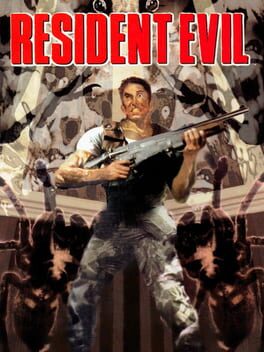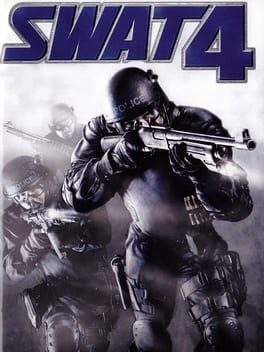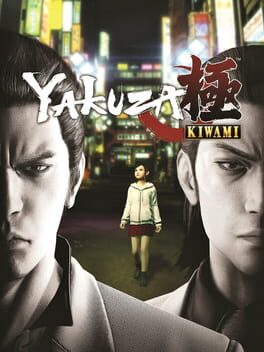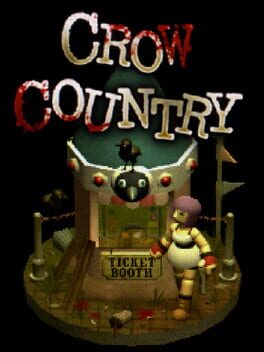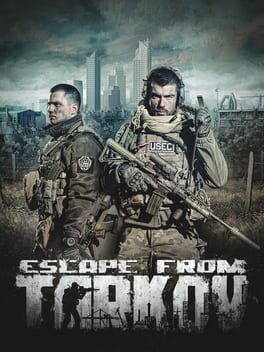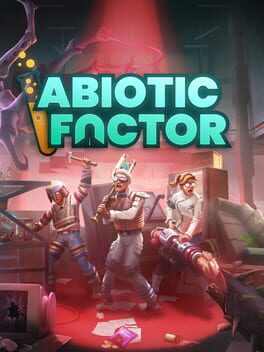JosephS
25 reviews liked by JosephS
initially i buried the lede, but i'm angry enough that i won't: this is a story david cage would write wrapped in a game good enough that he would hate every second of it.
lorelei and the laser eyes is a flawless dollhouse construction of beautiful puzzleboxes. the art and design is excellent and when it pulls a gimmick it pulls it excellently. it pushes, dramatically, towards one-upping the mechanical center of outer wilds' climax (with several more moving parts, each with a highlights mathmania's worth of fun little tricks to solve).
the problem is that the game also wants to one up the emotional climax of outer wilds, and it doesn't know what the fuck a human being is. the best it can offer you is a mannequin, with a mannequin of that same mannequin off to the side, in the corner, winking solemnly. it is a sad joke, an attempt at a gut punch so limp that it made me the angriest i've been at a video game all year. it is rare that i am this impressed by a video game i feel for a moment i might actually hate.
the worst part is that i know these motherfuckers can do the work. there is good writing in many inches of the margins here, and, besides, they've made one bonafide goddamn video game narrative masterpiece (device 6, a much better game than this overall) so it's all the more disappointing.
at least the end credits song is basically another sayonara wild hearts track.
probably the most angry i've been at a video game in years. hell, even twelve minutes was funny to think about.
lorelei and the laser eyes is a flawless dollhouse construction of beautiful puzzleboxes. the art and design is excellent and when it pulls a gimmick it pulls it excellently. it pushes, dramatically, towards one-upping the mechanical center of outer wilds' climax (with several more moving parts, each with a highlights mathmania's worth of fun little tricks to solve).
the problem is that the game also wants to one up the emotional climax of outer wilds, and it doesn't know what the fuck a human being is. the best it can offer you is a mannequin, with a mannequin of that same mannequin off to the side, in the corner, winking solemnly. it is a sad joke, an attempt at a gut punch so limp that it made me the angriest i've been at a video game all year. it is rare that i am this impressed by a video game i feel for a moment i might actually hate.
the worst part is that i know these motherfuckers can do the work. there is good writing in many inches of the margins here, and, besides, they've made one bonafide goddamn video game narrative masterpiece (device 6, a much better game than this overall) so it's all the more disappointing.
at least the end credits song is basically another sayonara wild hearts track.
probably the most angry i've been at a video game in years. hell, even twelve minutes was funny to think about.
Resident Evil
1996
forgot to log this. played a few hours this year. I found it hard to get into (repeating stuff when you die... the slow menu transitions lol.. they have a certain charm but get pretty grating)
but I really admire the way it has such a b-movie feel to it, but also how each individual room/combat/weird puzzle idea feels like a little vignette of its own. Maybe I'll come back some day! Or just move on to RE2...
but I really admire the way it has such a b-movie feel to it, but also how each individual room/combat/weird puzzle idea feels like a little vignette of its own. Maybe I'll come back some day! Or just move on to RE2...
Fallout: New Vegas
2010
On an engine that doesn't have a famously-bad character controller and a penchant for inexplicable crashes, this would be a flawless game. Instead it's just extremely good. Wonderful and reactive story, a well-realized world, builds upon the mythos with care and insight, and just plain fun! Ugly as piss but you do the best with what you got.
Give Josh Sawyer infinite money and a talented team please. The man deserves to not have every triumphantly good RPG he directs be ruined by corporate meddling.
Give Josh Sawyer infinite money and a talented team please. The man deserves to not have every triumphantly good RPG he directs be ruined by corporate meddling.
SWAT 4
2005
So above and beyond what a tactical police shooter would reasonably need to have in so many different areas that you wonder how it even came to be. SWAT 4 may sit at the top of the very narrow category of most anxiety-inducing simultaneous first and second person shooters with needlessly detailed environmental storytelling, but it’s led me to a much broader, more general thought – for how saturated and longstanding a genre it is, how much has what you can do with a shooter really been explored?
A few things about it bring this question to mind, but the main one for me’s its morale system. Each enemy and civilian has a different level of morale which affects how likely they are to surrender, pretend to surrender before pulling some kind of stunt or be nakedly noncompliant whenever you and your squad shout at them. By themselves, these kinds of reactions go a long way toward making it so that the player can never guess what’ll happen when they open any given door, but what takes this system to the next level is the sheer amount of factors which can affect it; whether they’re a group of trained gunman or a single inexperienced gangbanger, whether they’ve been stunned with some form of nonlethal attack, whether there are any hostages for them to take advantage of or hostiles to point you in the direction of, how many of you there are versus how many of them, how much damage they’ve sustained to each of their limbs and, my favourite, surprising them with warning shots. I’d never realised until playing this that hitting or missing a target in a shooter doesn’t necessarily have to be a dichotomy between success or failure – here, the latter can also be a tool for intimidation when Officer Backloggd User’s vocal chords aren’t cutting it alone. Firing a shotgun near someone’s feet to twist what’d normally be a failure state into something potentially advantageous extends past the fantasy of feeling like a Michael Mann character and gets the mind wondering about the uncapitalised potential of not just this genre, but others too. Why, for instance, do RPGs still often limit us to dialogue boxes labelled (Intimidate) or whatever when a far more organic implementation of that sort of interaction’s right here?
This sort of unpredictability which causes each attempt at the same level to play out differently every time’s a specialty of SWAT 4. Choosing different entry points coupled with NPCs’ semi-randomised spawns contribute a fair amount to this too, especially when specific characters are part of the mission’s objectives in some way, though the fact that the aforementioned limb-based damage system also applies to you and your squad plays a large role as well. While the extent to which this game wants you to take it slow’s immediately felt in the pairing of its relatively low movement speed and how harshly guns’ crosshairs widen, it becomes even more apparent when you’ve got an injured leg, head or arm. Suddenly, you find yourself even more hesitant to attempt to follow a fleeing suspect through a series of doors they’re shutting behind them, and whatever strategies you had in mind when selecting your long-range equipment have been scuppered by your diminished accuracy. If it sounds restrictive, don’t worry, because it can open up about as many avenues of play as it can close; one example I particularly enjoyed involved clearing a mission which heavily encourages you to use nonlethal weaponry by instead aiming for unarmoured limbs with 9mm FMJ rounds, since it’s easier to skirt around score penalties by incapacitating hostiles rather than killing them.
Although there’s an easy comparison to be made in terms of the replayability of individual encounters with its contemporary F.E.A.R., down to how heavily this stems from the AI’s dynamic behaviours, there’s another, less expected parallel in how thickly it lays on all things atmospheric. Breaching a two-storey room filled with explosive canisters and over half a dozen heavily armed death cultists is nerve-wracking enough, then it decides to hit you with a scene like this just moments after. It’d be easy to think of moments like this or a much earlier, loose equivalent of VTMB’s Ocean House Hotel as borderline genre pivots, but they’re more tonally synergistic than they seem at first. This is a game in which you die in two clean hits regardless of difficulty, so much as taking your eye off a bodycam for a second can prove to be fatal and, as noted above, you can never fully anticipate what’s going to greet you on the other side of a door, so it makes sense to ensure that the player can never anticipate what’s up next on a conceptual level in addition to a mechanical one, as well as to occasionally dial up the horror and exacerbate the uneasiness that average Joes with Uzis are already so good at instilling.
Irrational’s prior experience with horror isn’t the only instance of their ancestry rearing its head in the least likely of places, either. If you weren’t aware that they originated by splintering off from Looking Glass, having played one of the first two Thief games prior to this will probably clue you in, because SWAT 4’s incomplete, often hand-drawn, hastily annotated maps are straight out of those. You can only ever make a rough mental approximation of the layout of wherever you’re about to raid because of it, and chances are it’ll have geographical changes, potential hazards or other objectives they can’t possibly account for. It’s a small but brilliant touch which makes every eruption of overlapping GET DOWNs and WHERE’S MY GODDAMN LAWYERs mixed with gunfire all the more hectic as you’re inevitably forced to piece together your own whereabouts in the thick of it, usually while juggling your own perspective with that of a squadmate’s bodycam or a sniper feed to boot.
Despite how spur-of-the-moment all of this makes it sound and how many different ingredients are packed into it, up to and including some of Eric Brosius’ funkiest work, SWAT 4’s really a game of exceptionally singular focus; as the objective menu puts it, restoring order to chaos. It’s felt even in the size of its levels, which are just right for how many moving parts they each have and the number of ways in which those parts can be manipulated – you can charge me on account of lying if I told you that it’s always fun hunting down the last remaining suspect regardless, but it is always intense, and in general the most minor of blemishes on what’s otherwise one of many attestations to the fact that we’d probably be grand if games had just stopped progressing past what they could do in 2005.
Keep your cool, fiddle with your squadmates’ equipment and make regular use of the command menu to breach whatever obstacles are between you and giving this game a try, boss.
A few things about it bring this question to mind, but the main one for me’s its morale system. Each enemy and civilian has a different level of morale which affects how likely they are to surrender, pretend to surrender before pulling some kind of stunt or be nakedly noncompliant whenever you and your squad shout at them. By themselves, these kinds of reactions go a long way toward making it so that the player can never guess what’ll happen when they open any given door, but what takes this system to the next level is the sheer amount of factors which can affect it; whether they’re a group of trained gunman or a single inexperienced gangbanger, whether they’ve been stunned with some form of nonlethal attack, whether there are any hostages for them to take advantage of or hostiles to point you in the direction of, how many of you there are versus how many of them, how much damage they’ve sustained to each of their limbs and, my favourite, surprising them with warning shots. I’d never realised until playing this that hitting or missing a target in a shooter doesn’t necessarily have to be a dichotomy between success or failure – here, the latter can also be a tool for intimidation when Officer Backloggd User’s vocal chords aren’t cutting it alone. Firing a shotgun near someone’s feet to twist what’d normally be a failure state into something potentially advantageous extends past the fantasy of feeling like a Michael Mann character and gets the mind wondering about the uncapitalised potential of not just this genre, but others too. Why, for instance, do RPGs still often limit us to dialogue boxes labelled (Intimidate) or whatever when a far more organic implementation of that sort of interaction’s right here?
This sort of unpredictability which causes each attempt at the same level to play out differently every time’s a specialty of SWAT 4. Choosing different entry points coupled with NPCs’ semi-randomised spawns contribute a fair amount to this too, especially when specific characters are part of the mission’s objectives in some way, though the fact that the aforementioned limb-based damage system also applies to you and your squad plays a large role as well. While the extent to which this game wants you to take it slow’s immediately felt in the pairing of its relatively low movement speed and how harshly guns’ crosshairs widen, it becomes even more apparent when you’ve got an injured leg, head or arm. Suddenly, you find yourself even more hesitant to attempt to follow a fleeing suspect through a series of doors they’re shutting behind them, and whatever strategies you had in mind when selecting your long-range equipment have been scuppered by your diminished accuracy. If it sounds restrictive, don’t worry, because it can open up about as many avenues of play as it can close; one example I particularly enjoyed involved clearing a mission which heavily encourages you to use nonlethal weaponry by instead aiming for unarmoured limbs with 9mm FMJ rounds, since it’s easier to skirt around score penalties by incapacitating hostiles rather than killing them.
Although there’s an easy comparison to be made in terms of the replayability of individual encounters with its contemporary F.E.A.R., down to how heavily this stems from the AI’s dynamic behaviours, there’s another, less expected parallel in how thickly it lays on all things atmospheric. Breaching a two-storey room filled with explosive canisters and over half a dozen heavily armed death cultists is nerve-wracking enough, then it decides to hit you with a scene like this just moments after. It’d be easy to think of moments like this or a much earlier, loose equivalent of VTMB’s Ocean House Hotel as borderline genre pivots, but they’re more tonally synergistic than they seem at first. This is a game in which you die in two clean hits regardless of difficulty, so much as taking your eye off a bodycam for a second can prove to be fatal and, as noted above, you can never fully anticipate what’s going to greet you on the other side of a door, so it makes sense to ensure that the player can never anticipate what’s up next on a conceptual level in addition to a mechanical one, as well as to occasionally dial up the horror and exacerbate the uneasiness that average Joes with Uzis are already so good at instilling.
Irrational’s prior experience with horror isn’t the only instance of their ancestry rearing its head in the least likely of places, either. If you weren’t aware that they originated by splintering off from Looking Glass, having played one of the first two Thief games prior to this will probably clue you in, because SWAT 4’s incomplete, often hand-drawn, hastily annotated maps are straight out of those. You can only ever make a rough mental approximation of the layout of wherever you’re about to raid because of it, and chances are it’ll have geographical changes, potential hazards or other objectives they can’t possibly account for. It’s a small but brilliant touch which makes every eruption of overlapping GET DOWNs and WHERE’S MY GODDAMN LAWYERs mixed with gunfire all the more hectic as you’re inevitably forced to piece together your own whereabouts in the thick of it, usually while juggling your own perspective with that of a squadmate’s bodycam or a sniper feed to boot.
Despite how spur-of-the-moment all of this makes it sound and how many different ingredients are packed into it, up to and including some of Eric Brosius’ funkiest work, SWAT 4’s really a game of exceptionally singular focus; as the objective menu puts it, restoring order to chaos. It’s felt even in the size of its levels, which are just right for how many moving parts they each have and the number of ways in which those parts can be manipulated – you can charge me on account of lying if I told you that it’s always fun hunting down the last remaining suspect regardless, but it is always intense, and in general the most minor of blemishes on what’s otherwise one of many attestations to the fact that we’d probably be grand if games had just stopped progressing past what they could do in 2005.
Keep your cool, fiddle with your squadmates’ equipment and make regular use of the command menu to breach whatever obstacles are between you and giving this game a try, boss.
Yakuza Kiwami
2016
Crow Country
2024
Really liked it! Looks super good and is a perfect emulation of Resident Evil's design while feeling reminiscent of FF7 Golden Saucer's Ghost Square, or Illbleed. I beat it in basically one sitting, I was so engrossed (and it's relatively short, 4-5 hours at a normal pace). Story has some fun mysteries but goes where you expect and has a bittersweet ending. Nice to complete a game and walk away from it feeling satiated and pleased, that's so rare these days.
I like this game so much I wrote the definitive guide for it!
I like this game so much I wrote the definitive guide for it!
Escape from Tarkov
2017
Serious milsim shooter on the surface, but it's actually more like gun runescape. Lots of time in this game is spent thinking about your character's obscene amount of stats, exp, leveling, collecting, questing, and sorting your items and equipment. It's super satifying.
There are thousands of little things to learn about and memorize like which locations you can get specific resources, which weapons/ammo types are worth using, and more. A couple of times a year the servers wipe and you get to play all over again and progress even faster with all your nuggets of knowledge and experience.
The visuals are extremely dense with lots of endearing little details, like lovingly animated first person food eating animations, showing your PMC cracking open a can of sardines picking out and eating each fish at a time. Lots of cute scrawlings and grafittis on walls and envrionmental details like that.
The game is pretty torturous a lot of the time, since you lose everything on your character when you die. The community feels a lot more friendly than many other shooter games though, and I think because the game is so complex and difficult that it feels like everyone has more incentive to help each other out and share knowledge. It's a PvPvE game but it's also more like the players are fighting together against the brutal difficulty of the game itself. IMO this captures the lifeblood of many old MMO games.
About the different priced editions of the game:
A considerable % of people who play Tarkov have purchased the Edge of Darkness edition, which is $150, and includes a bunch of starter items + a large secure container (you keep all the items in there if you die). I've always held off, playing the cheapest edition with the smallest secure container/stash size, thinking that maybe I'll upgrade later. I eventually decided this is my favorite way to play. The smallest secure container is so tiny, and it makes the early game much more challenging and exciting. The small stash size forces me to be critical of what I loot, pushing to get valuable containers like the lucky scav junkbox as early as possible. Unlocking the first secure container upgrade (beta) early on feels SO rewarding. If I had the EOD edition it would be fully worthless. Plus I saved literally like $100. If that sounds good to you. I highly recommend at least playing a wipe or two before upgrading to an expensive edition of the game.
There are thousands of little things to learn about and memorize like which locations you can get specific resources, which weapons/ammo types are worth using, and more. A couple of times a year the servers wipe and you get to play all over again and progress even faster with all your nuggets of knowledge and experience.
The visuals are extremely dense with lots of endearing little details, like lovingly animated first person food eating animations, showing your PMC cracking open a can of sardines picking out and eating each fish at a time. Lots of cute scrawlings and grafittis on walls and envrionmental details like that.
The game is pretty torturous a lot of the time, since you lose everything on your character when you die. The community feels a lot more friendly than many other shooter games though, and I think because the game is so complex and difficult that it feels like everyone has more incentive to help each other out and share knowledge. It's a PvPvE game but it's also more like the players are fighting together against the brutal difficulty of the game itself. IMO this captures the lifeblood of many old MMO games.
About the different priced editions of the game:
A considerable % of people who play Tarkov have purchased the Edge of Darkness edition, which is $150, and includes a bunch of starter items + a large secure container (you keep all the items in there if you die). I've always held off, playing the cheapest edition with the smallest secure container/stash size, thinking that maybe I'll upgrade later. I eventually decided this is my favorite way to play. The smallest secure container is so tiny, and it makes the early game much more challenging and exciting. The small stash size forces me to be critical of what I loot, pushing to get valuable containers like the lucky scav junkbox as early as possible. Unlocking the first secure container upgrade (beta) early on feels SO rewarding. If I had the EOD edition it would be fully worthless. Plus I saved literally like $100. If that sounds good to you. I highly recommend at least playing a wipe or two before upgrading to an expensive edition of the game.
nintendo made a kaizo hack of their own game and charged full price for it and I somehow don't think it's the worst thing ever
I won't be telling you that japanese smb2 is some underappreciated or overhated hidden gem like other nes sequels but I will tell you that it's actually really, really funny. It just has this level of personality to it, like no other game of its time had the audacity to make you wait out a level timer or intentionally throw yourself into a pit to avoid being sent back to the very start of the game. Smb2 was always supposed to be "for experts". The devs weren't just doing this to arbitrarily extend playtime, they did this to troll people, and they probably thought it was funny too. It makes the lost levels, to me, a microcosm of a time where game development wasn't just a job, it was also hobby - it was more personal. I think this game is actually kinda awesome for being less curated, more bullshit and not well designed, and I wouldn't have it any other way.
I won't be telling you that japanese smb2 is some underappreciated or overhated hidden gem like other nes sequels but I will tell you that it's actually really, really funny. It just has this level of personality to it, like no other game of its time had the audacity to make you wait out a level timer or intentionally throw yourself into a pit to avoid being sent back to the very start of the game. Smb2 was always supposed to be "for experts". The devs weren't just doing this to arbitrarily extend playtime, they did this to troll people, and they probably thought it was funny too. It makes the lost levels, to me, a microcosm of a time where game development wasn't just a job, it was also hobby - it was more personal. I think this game is actually kinda awesome for being less curated, more bullshit and not well designed, and I wouldn't have it any other way.
Total War: Shogun 2
2011
A fairly 'lean' strategy game in all regards, which is both its strongest point and also the thing that eventually makes me leave it for a while. Aside from the setting, the game is really carried by how satisfying the fundamental spear/bow/cavalry mechanics are to execute.
Battles are a lot of fun, the map strategy part not so much. Diplomacy is really gamey and rudimentary which is fine from a sort of setting-agnostic game design point of view but given the setting I'd have preferred some more involved choices on that front.
The economy and research mechanics kind of start feeling more or less fake the more you figure the game out. "Just produce more yari ashigaru" frequently ends up being not only the best decision militarily (lowering the usefulness of researching higher tier units) but also economically as well (lowering the usefulness of both research and investing in economy buildings). I know you don't have to play optimally on every difficulty mode, but I don't like that like 70% of the higher-tier unit roster feels like extravagance rather than upgrades you're desperate for.
Battles are a lot of fun, the map strategy part not so much. Diplomacy is really gamey and rudimentary which is fine from a sort of setting-agnostic game design point of view but given the setting I'd have preferred some more involved choices on that front.
The economy and research mechanics kind of start feeling more or less fake the more you figure the game out. "Just produce more yari ashigaru" frequently ends up being not only the best decision militarily (lowering the usefulness of researching higher tier units) but also economically as well (lowering the usefulness of both research and investing in economy buildings). I know you don't have to play optimally on every difficulty mode, but I don't like that like 70% of the higher-tier unit roster feels like extravagance rather than upgrades you're desperate for.
Abiotic Factor
2024
Extremely cozy game. Obviously Half-Life 1 inspired. What if you played the scientist team and had to survive with your wits instead of your inexplicably amazing way with guns?
I'm generally anti-survival-crafter because they mostly seem to be about stripping the environment of trees and rocks and shit and building an extremely ugly-looking box house. This game recontextualizes that behavior into strip-mining an office complex to build little hovel-apartments to support your work exploring each zone. As a result it feels like the intermediary period between the start of the cascade and when you as Gordon Freeman run into some scientist guy huddled in a corner behind a makeshift barricade going "please help me!!!"
The other thing I super love about it is that so much of your time is about exploring a specific path until that path eventually loops back into the main "unlocked" part of your run. There's five billion shortcuts per area, all bespoke, all uncovered by digging through every nook and cranny. It's extremely rewarding to just wander around and get lost and follow some arbitrary path because it'll give you resources AND open up new parts of the level.
Brilliant stuff. Palworld could never.
I'm generally anti-survival-crafter because they mostly seem to be about stripping the environment of trees and rocks and shit and building an extremely ugly-looking box house. This game recontextualizes that behavior into strip-mining an office complex to build little hovel-apartments to support your work exploring each zone. As a result it feels like the intermediary period between the start of the cascade and when you as Gordon Freeman run into some scientist guy huddled in a corner behind a makeshift barricade going "please help me!!!"
The other thing I super love about it is that so much of your time is about exploring a specific path until that path eventually loops back into the main "unlocked" part of your run. There's five billion shortcuts per area, all bespoke, all uncovered by digging through every nook and cranny. It's extremely rewarding to just wander around and get lost and follow some arbitrary path because it'll give you resources AND open up new parts of the level.
Brilliant stuff. Palworld could never.

